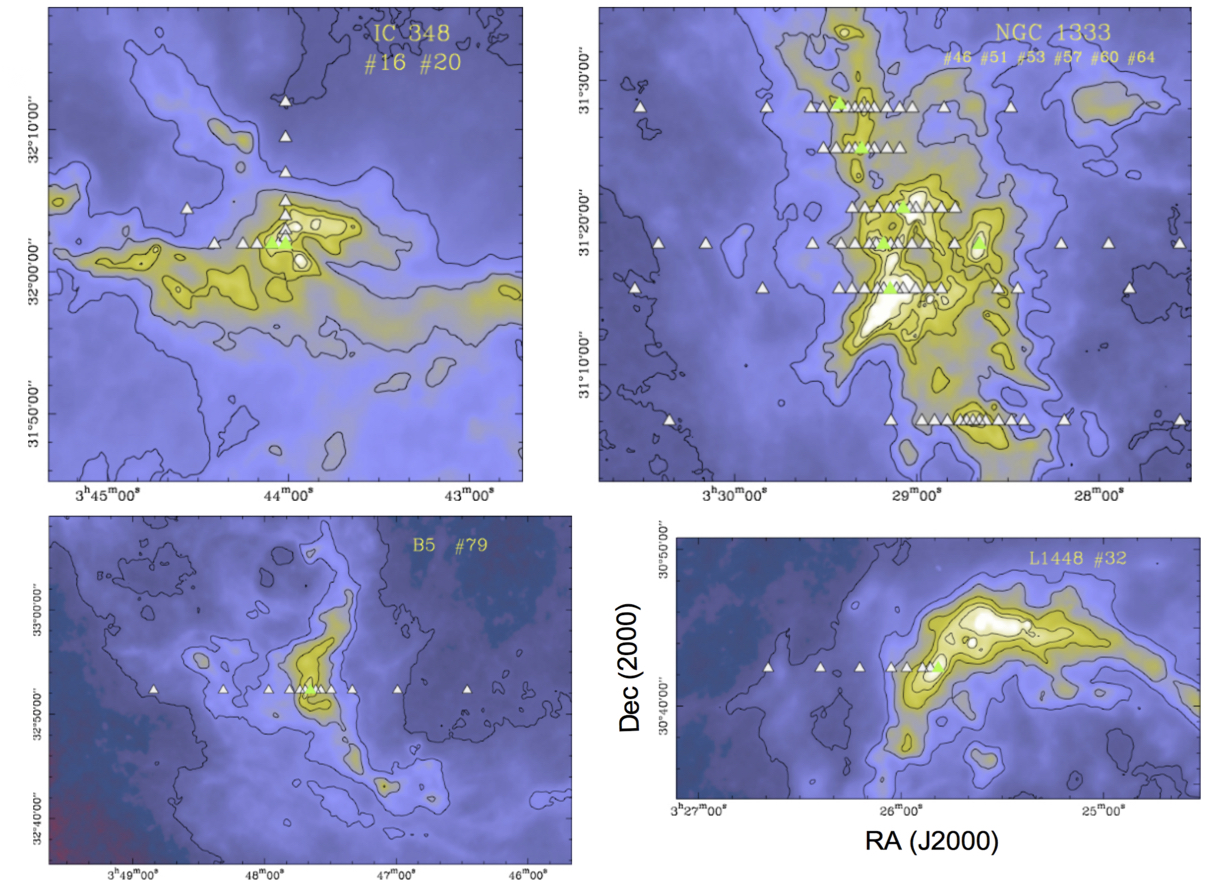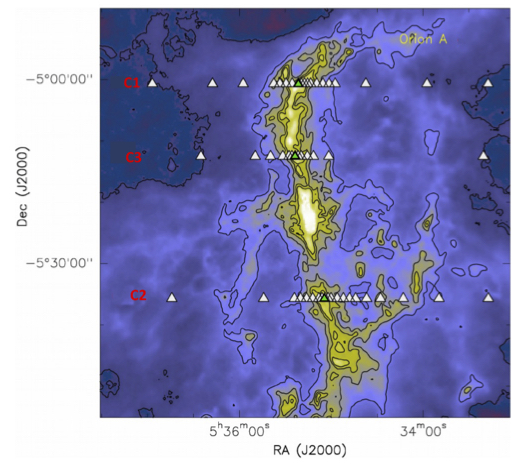Gas phase Elemental abundances in Molecular Clouds (GEMS)
GEMS is a large program at the IRAM 30-meter telescope that was granted 458 hours of observing time. The GEMS project aims to determine the gas ionization degree, X(e-), and the elemental depletions (C, O, S, N) as a function of visual extinction in a set of prototypical star forming filaments located in Taurus, Perseus and Orion (TMC1, B213/L1495, B1b, NGC 1333, IC348, L1448, B5, Orion A).
The knowledge of elemental depletions is a valuable information to determine the evolution of dust grains across the cloud. The precise knowledge of elemental depletions is also necessary to determine the gas ionization degree, which is an essential ingredient in studies of cloud stability. The GEMS sample allows us to study the influence of the environment (different incident UV fields) and the initial physical conditions of the parent cloud on the dynamical evolution of the gas and the final chemical composition of the prestellar cores. This project is led by Asuncion Fuente (OAN, Spain) who coordinates a large European team of experts in astrochemistry and star formation.
As GEMS product, we provide a complete set of molecular data. The database provides fully reduced, calibrated spectra. The dataset includes high-sensitivity spectroscopic observations at 3mm and 2mm of the species C18O, HCN, H13CN, HCO+, H13CO+, CS, C34S, 13CS, SO, 34SO, H2S, HCS+ and H2CS. Within the observed frequency bands, spectral lines of more complex species such as CH3OH and CH3CCH can also be found. A detailed description of the observations (frequency bands, spectral resolution, sensitivity) and a data repository are available on the GEMS homepage: https://www.oan.es/gems . The data repository is also available here at IRAM.
Please do not hesitate to contact Asuncion Fuente to inform her about the use of the data for further scientific publications to be included on the homepage.
The following acknowledgment would be appreciated: This work made use of data from GEMS, the IRAM Large Program Gas phase Elemental abundances in Molecular Clouds (Rodriguez-Baras, Fuente et al. 2021, Astronomy and Astrophysics, Volume 648, 120)." An acknowledgement to GEMS is also appreciated if data are used in public presentations.

Figure 1: Perseus filaments (from left to right and top to bottom: NGC 1333, IC 348, L 1448, and B5) dust opacity maps at 850um by Zari et al. (2016, A&A, 587, A106). Positions observed within GEMS are indicated with triangles.

Figure 2: Orion dust opacity map at 850 um by Lombardi et al. (2014, A&A, 568, C1). The GEMS observed positions are indicated by triangles.
Last updated: 15 December 2021



